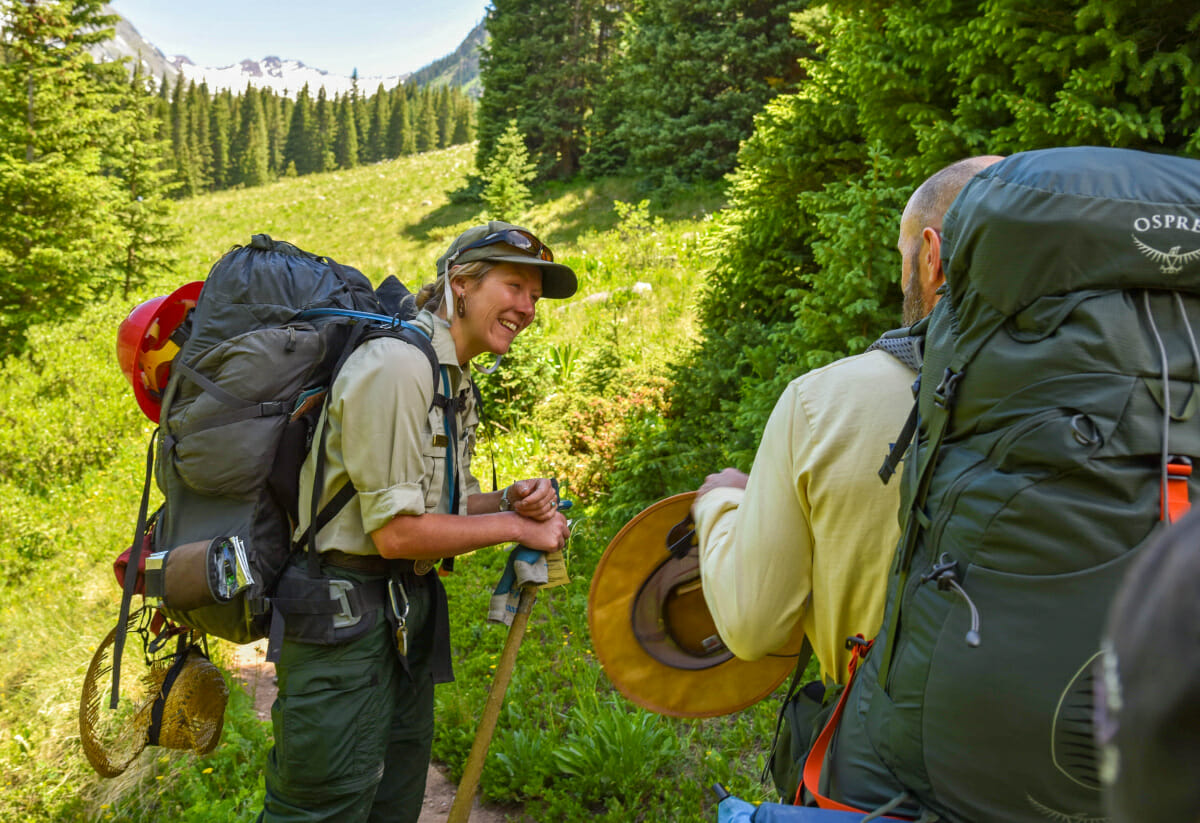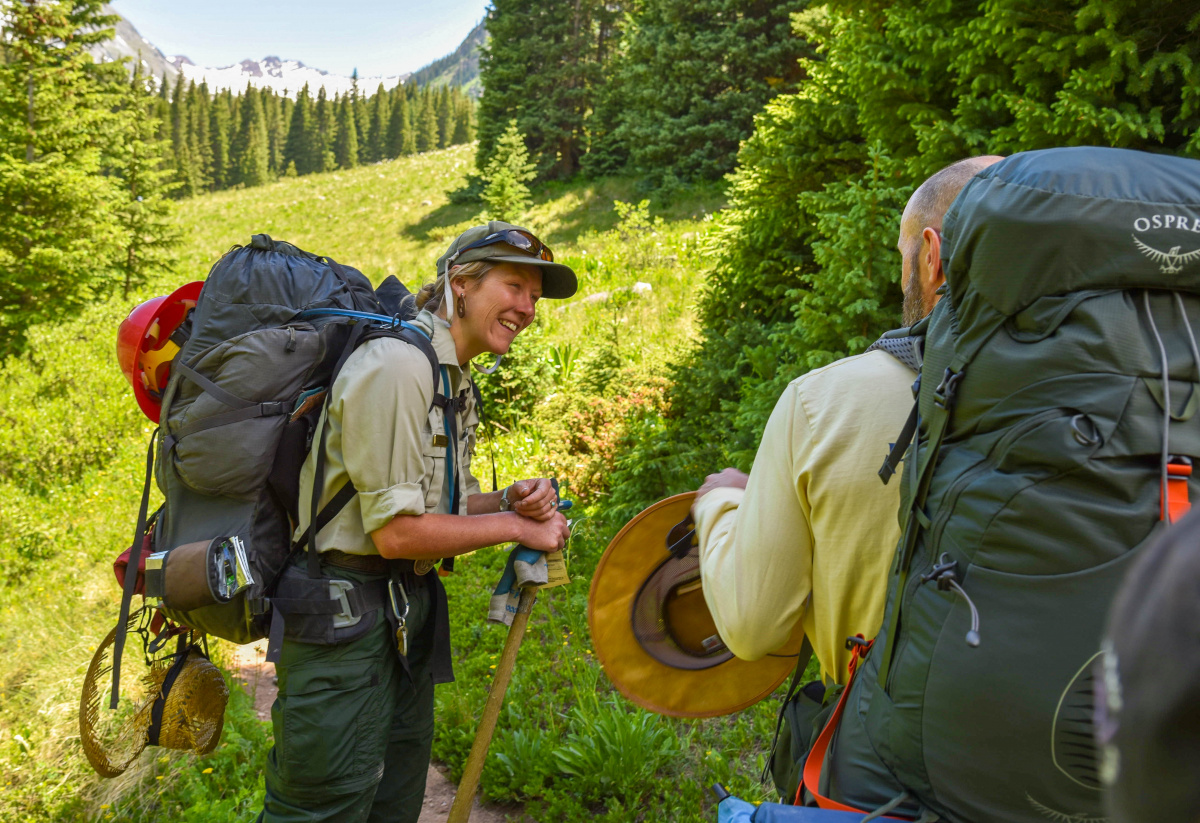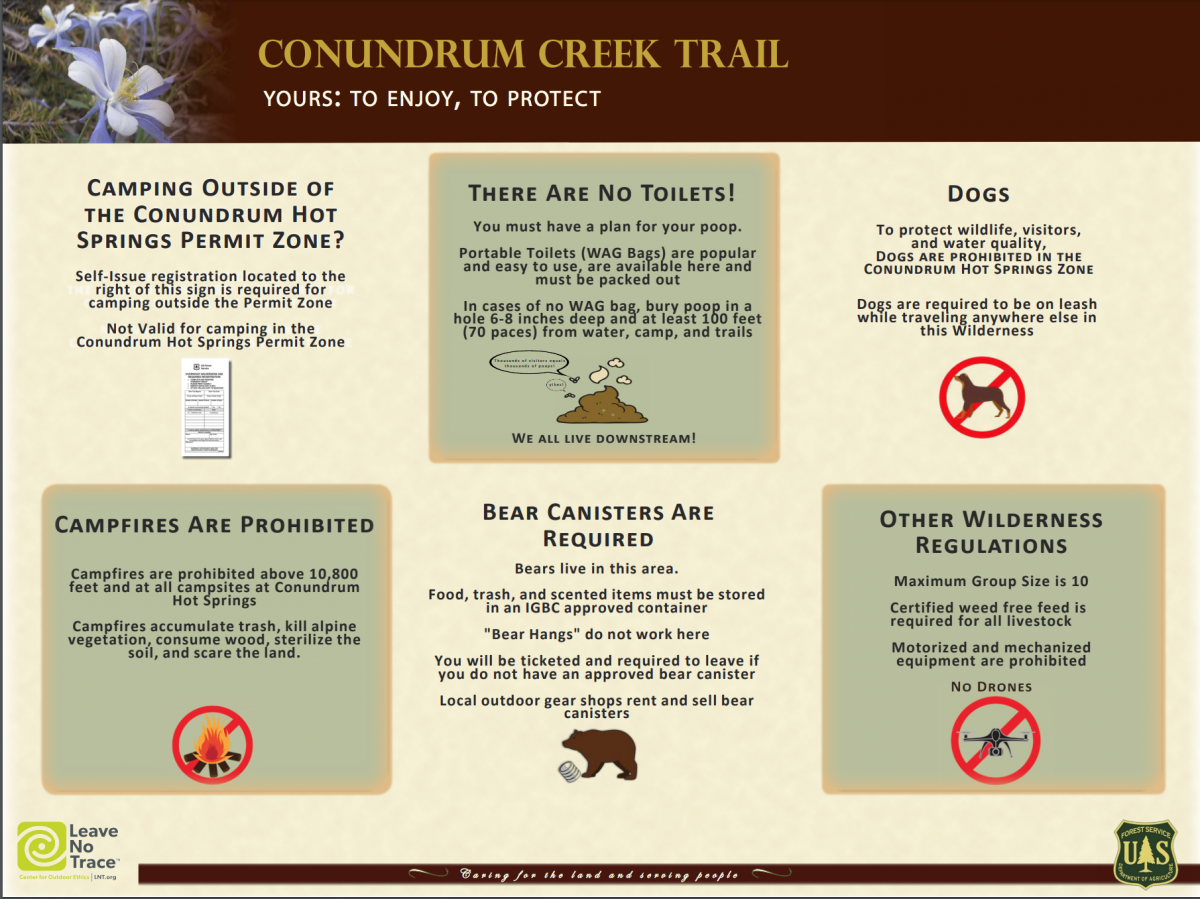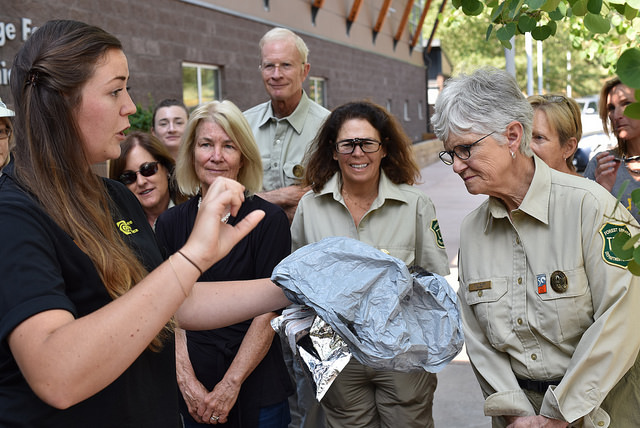Places We've Shaped
Anatomy of a Successful Hot Spot


Aspen, CO: Imagine a cross between a frat party and a Phish concert. Now drop that scene onto a high alpine basin with a small hot springs pool and you’ve got an idea of the trouble that was facing Conundrum Hot Springs until recently. Trash, discarded clothing, exposed piles of human waste (yup, poop), loud groups and music playing on speakers, vegetation damage from trampling and firewood gathering, human-wildlife conflicts, and safety risks to unprepared hikers marred the wilderness character of this otherwise idyllic spot high in the Maroon Bells-Snowmass Wilderness. These impacts motivated Conundrum’s selection as a 2017 Leave No Trace Hot Spot.[1]
We recently had the chance to revisit Conundrum Hot Springs. The 2017 Hot Spot week was very successful (read about it here), but what’s exciting about this Hot Spot is how clearly it illustrates the positive outcomes possible through the partnerships formed between public lands and Leave No Trace. On our recent backpacking trip to Conundrum Hot Springs during the revisit, we discovered only echoes of recent troubles. What follows is a brief and undoubtedly incomplete list of some of the numerous things that have made Hot Spots like this one so successful:
Focus: You can go down a rabbit hole if you try to apply overly broad Leave No Trace recommendations to a specific list of impacts. By focusing on impacts that were causing the most harm at Conundrum, the USDA Forest Service and Leave No Trace staff were able to craft more effective educational messages to visitors. These impacts can be summarized as bears, poop, and crowding. We’ll get into how the Forest Service is on track to solve these issues below.

Boots on the Ground: Even in the digital age, face-to-face contact remains the most effective way of communicating environmental stewardship. The Aspen-Sopris Ranger District staff, along with the Forest Conservancy volunteer group, have worked hard to help educate visitors so that they can make better decisions and have safer, more sustainable backcountry trips. We got to go with some rangers on an overnight patrol to Conundrum, and their level of rapport with visitors and their communication skills were impressive. Leave No Trace has been able to help rangers and volunteers further hone their messaging with interactive workshops on the best ways to communicate Leave No Trace. Workshops were held during the 2017 Hot Spot week and again this year during our revisit.

Clear, Direct Communication: Whether it’s done through face-to-face communication, or through trailhead signs or websites, explaining the social, ecological and aesthetic reasons behind recommendations goes a long way in helping visitors develop low impact wilderness habits. The Forest Service has developed new trailhead signs with input from Leave No Trace, improved messaging on their websites, and included a video produced by Leave No Trace on how to protect Conundrum at the top of its camping permit page. The permit system hasn’t reduced overall visitation to Conundrum, but it has spread out the annual average 6,000+ visitors so that they’re not all there on the same five weekends. What’s more, requiring overnight visitors to obtain a permit online allows for the chance to provide them with important information right there on the permit page.

Empowering Good Decisions: As recently as 2014, there were at least 30 reported incidents per year of bear-human interaction in the area, culminating in the euthanizing of one bear. By requiring that overnight visitors use certified bearproof containers, the Forest Service has cut that number down to zero today, empowering visitors with an easier and safer way to visit the area (for humans and bears). In addition, to help mitigate human waste impacts in the fragile, rocky alpine basin, portable chemical toilets (WAG bags) are available at the trailhead for free. Sanitary and easy to use, these help visitors leave no trace when nature calls.

Community Engagement: Katy Nelson, Wilderness and Trails Program Manager for the Aspen-Sopris Ranger District, brought in members of the local and regional press, including Colorado Public Radio, the Aspen Daily News, and 5280 Magazine, as well as including local retailers, outfitters and volunteer trail stewards from the Aspen-based Forest Conservancy to help spread the word. In addition, the Forest Service solicited and received well over 200 constructive public comments on the permit mandate.
Commitment to Leave No Trace Training: Training in Leave No Trace principles, practices and communication techniques is always a big part of any Hot Spot, and we had the opportunity to continue this tradition on our revisit, with a full day training for trail crews, rangers, local outfitters and volunteers. One of the central action items emerging from our revisit is the integration of Leave No Trace training into volunteers’ and employees’ regular training opportunities.
—-
Thank you to all who invest in their public lands. They’re worth protecting, and we could never spread Leave No Trace education without your hard work
Enjoy Your World. Leave No Trace.
Jessie and Matt
Leave No Trace’s Jessie Johnson and Matt Schneider are part of the 2018 Subaru/Leave No Trace Traveling Trainer Program that provides free, mobile education to communities across the country. Proud partners of this program include Subaru of America, REI, Eagles Nest Outfitters, Deuter, Thule, Taxa, and Klean Kanteen.
[1] If you’ve followed Leave No Trace even just a little, you’re probably familiar with Hot Spots, the central program in our Leave No Trace in Every Park initiative. Leave No Trace Hot Spots are areas negatively affected by human-caused impacts such as erosion, vegetation damage, crowding, litter, fire damage and improper disposal of human waste (poop). Basically, they’re amazing places in danger of being loved to death, but places that can (and do) recover with focused and comprehensive Leave No Trace education. This takes many forms and the months leading up to a Hot Spot are busy with planning calls and outreach to stakeholder groups, volunteers, partner agencies, outfitters, guide services, schools, and local media, in order to gather a team of folks who are invested in their hometown outdoor destination. The eight days of the Hot Spot are filled with Leave No Trace Awareness Workshops, Communication Workshops, school programs, trailhead outreach, service projects, backcountry trips, and focused consulting with land managers and other stakeholders; all in order to arrive at a clear action plan for the future.
Let’s protect and enjoy our natural world together
Get the latest in Leave No Trace eNews in your inbox so you can stay informed and involved.
